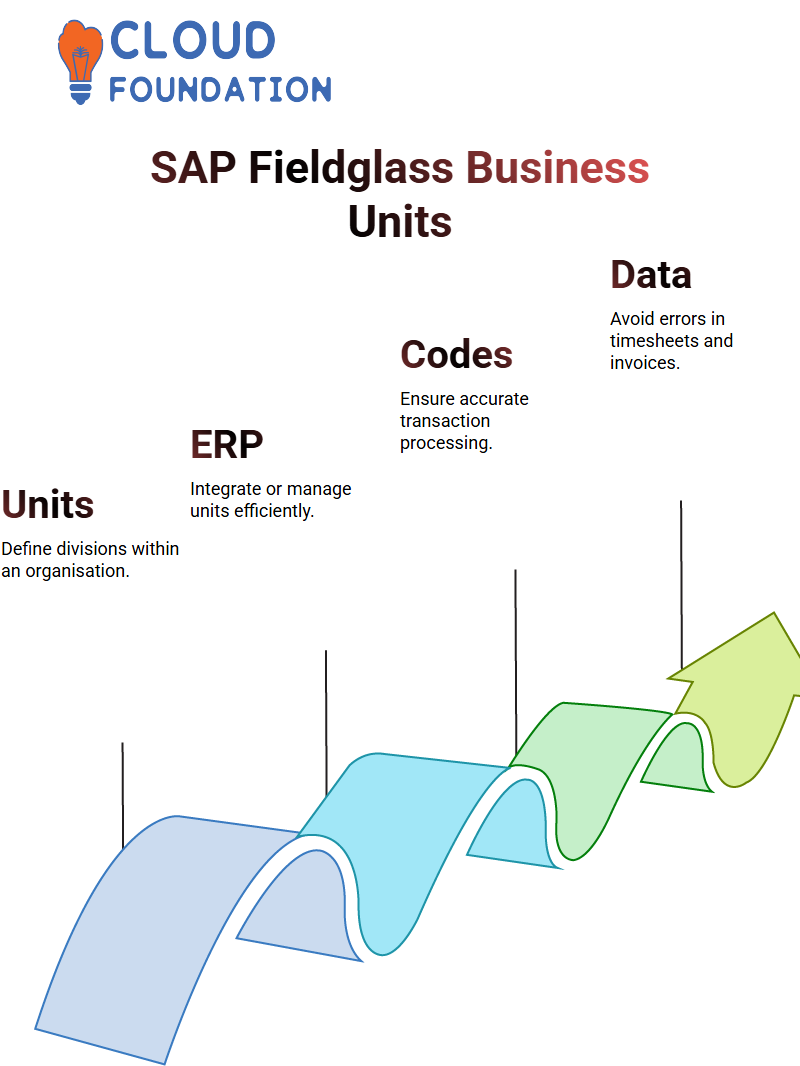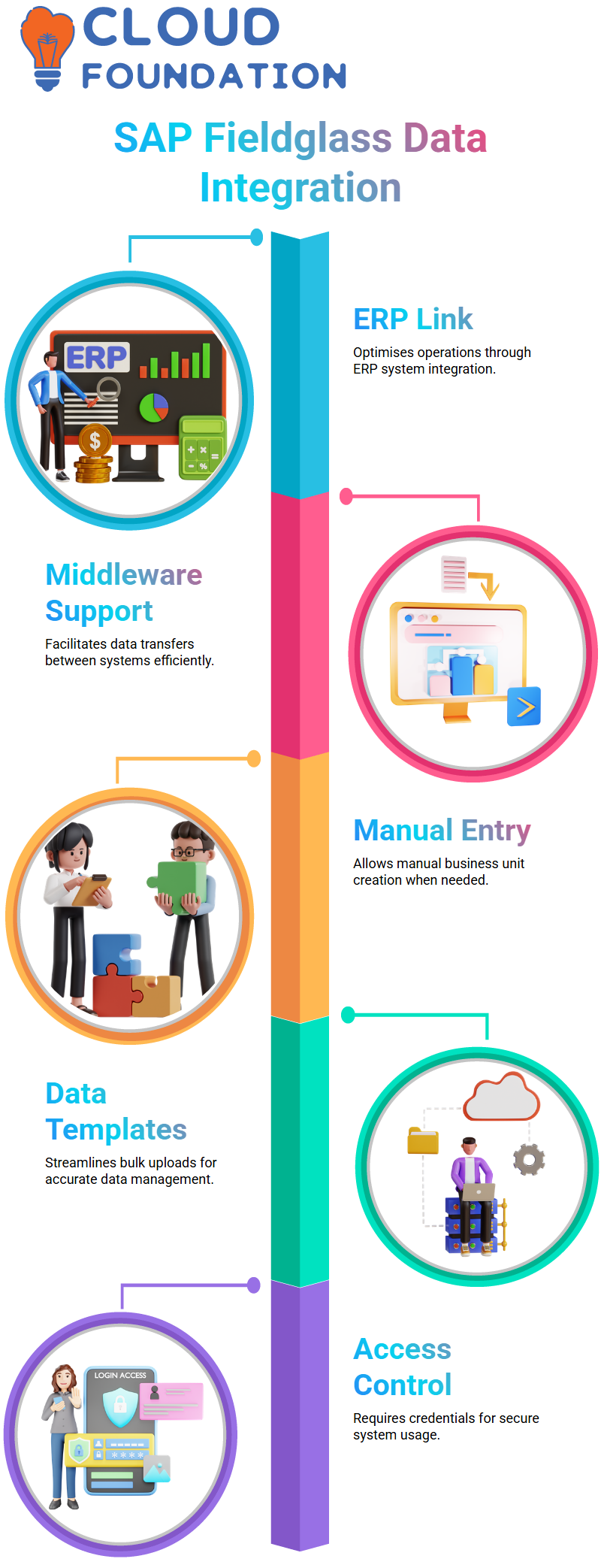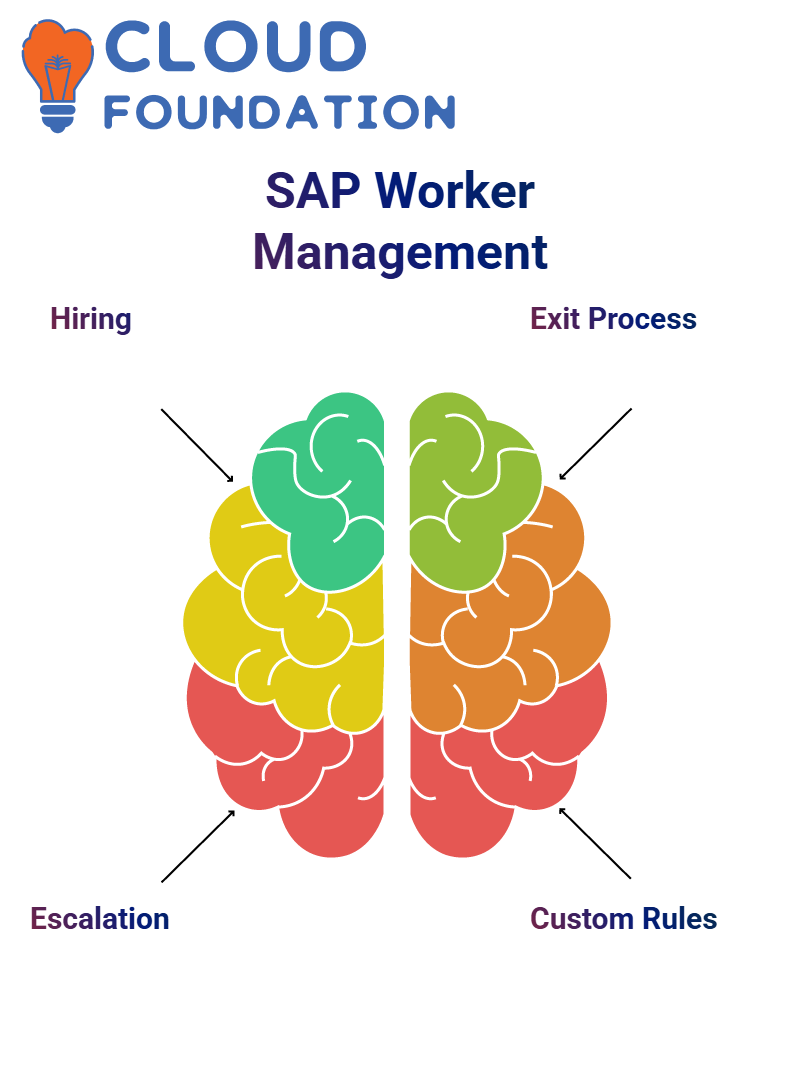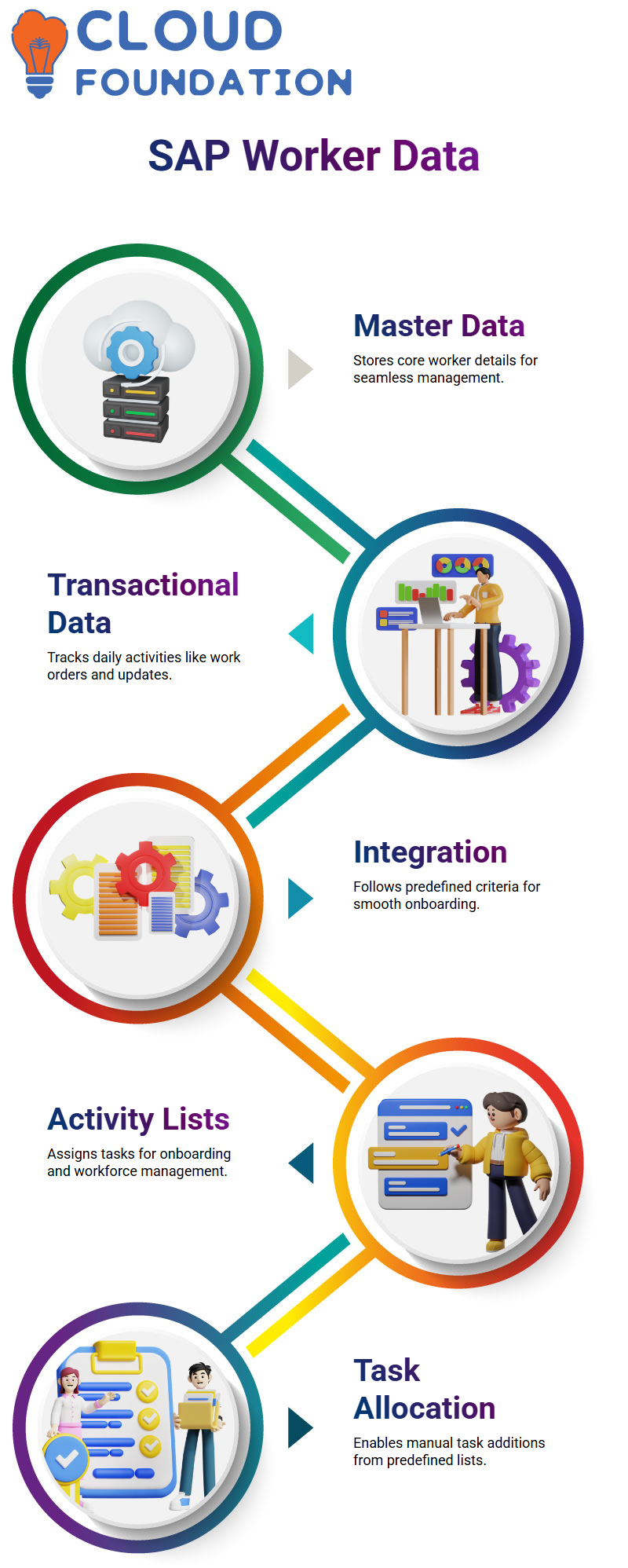SAP Fieldglass Supplier Onboarding and Vendor Management Tutorial
SAP Fieldglass
SAP Fieldglass plays a critical role in managing contingent workers and services for businesses today, as modern hiring processes shift toward employing contingent labourers or service providers directly.
Understanding suppliers is vital when adapting to modern hiring procedures, so let’s delve deeper into this system’s impact on vendor management and hiring operations.
Setting up a supplier in SAP Fieldglass is a straightforward process. First, we define their needs and the services they offer.

For those providing contingent workers, the contingent worker module ensures seamless management.
Defining Rules and Regulations in SAP Fieldglass
SAP Fieldglass enables businesses to establish internal controls by setting specific rules that maintain internal oversight and accountability.
One such rule, for instance, restricts item approvals when the budget is exceeded, helping maintain financial discipline within their system.
Users are expected to adhere to specific guidelines designed to maintain consistency and ensure a smooth workflow.
While these rules may seem arbitrary at times, their purpose is to maintain orderliness.
SAP Dynamic Procurement Process
SAP Fieldglass facilitates seamless procurement. If you’ve ever wondered how buyers and suppliers handle transactions, look no further.
SAP Fieldglass makes communication essential. Buyers and suppliers work collaboratively to revise statements of work (SOWs) until both parties reach a mutual understanding.
If a supplier disagrees with any rates or conditions, they can negotiate changes before sending back revisions. This ensures a balanced business landscape in SAP Fieldglass.
Role of Standalone Templates in SAP Fieldglass
Start creating an SOW template in SAP Fieldglass by selecting a standalone template.
In contrast to templates that inherit configuration from master setups, standalones require manual entry for every element, including cost allocation and worker role assignment.
SAP Fieldglass enables procurement teams to precisely define schedules, roles, and rates by their organisation’s specific standards.
One of SAP Fieldglass’ many strengths lies in its customisation capabilities, allowing procurement teams to adapt it as necessary.
Negotiations and Agreement in the SAP Fieldglass
SAP Fieldglass makes negotiations an integral component, helping buyers and suppliers reach a mutual understanding on the proposed rates.
If a supplier objects, they can reject it or suggest modifications.
After reviewing and accepting edits made to final rates in SAP Fieldglass by suppliers, contract negotiations begin.

This process ensures transparency and accountability, ensuring businesses operate effectively.
Event Libraries and Clause Management in SAP Fieldglass
SAP Fieldglass features event libraries to simplify payment schedules. Businesses can set events that trigger payments at specific milestones, making financial planning easier.
Clause libraries enhance SAP Fieldglass by providing predefined term and condition libraries that help maintain consistency among contracts while offering plenty of room for customisation.
Finalising Worker Selection with SAP Fieldglass
Once negotiations are concluded, buyers use SAP Fieldglass to finalise worker selection. Candidates undergo interviews, and only the top talent is chosen for employment – an approach designed to ensure high-quality hiring practices.
SAP Fieldglass streamlines onboarding for employees as well.

Workers can auto-register with SAP Fieldglass, eliminating the need for manual registration processes and providing efficient workforce deployment solutions.
Time and Payment Management in SAP Fieldglass
SAP Fieldglass payments can be either event- or time-based; some businesses utilise milestone payments, while others subscribe to monthly or quarterly billing cycles.
No matter the approach taken, SAP Fieldglass ensures smooth financial transactions by eliminating unnecessary delays and upholding contractual integrity.
Comprehensive Workflow Control in SAP Fieldglass
SAP Fieldglass enables companies to manage all aspects of Statement of Work (SOW) creation and approval, utilising its advanced workflow control functionality.
This includes SOW management and approval processes, as well as compliance monitoring, internal governance compliance, and other related activities.
By harnessing SAP Fieldglass, organisations can implement structured workflows that optimise collaboration, accelerate negotiations, and establish a solid foundation for effective procurement management.
Creating New Bids with SAP Fieldglass
SAP Fieldglass can help create new bids easily and quickly. Although not a master template, we can pull data directly from existing setups, which significantly speeds up our bidding process.
Unfortunately, however, any information inherited is only partial; further adjustments will likely be necessary depending on business requirements.
SAP Fieldglass enables businesses with diverse business units, currencies, and management styles to tailor the system specifically to their requirements, making the software versatile enough to accommodate organisations with varied needs.
Scheduling and Optimisation in SAP Fieldglass
SAP Fieldglass’ scheduling options make it essential for businesses.
While other modules might include event-triggered triggers, SAP Fieldglass primarily focuses on scheduling for structured planning and execution.
 SAP Fieldglass handles scheduling mechanisms that enable users to optimise resource allocation and workflow efficiency.
SAP Fieldglass handles scheduling mechanisms that enable users to optimise resource allocation and workflow efficiency.
Working with the SVW Module in SAP Fieldglass
SAP Fieldglass’ SVW module contains several essential configurations. Users must understand its fundamental elements – its role in setting internal workflows, approvals and financial regulations is just some.
By familiarising yourself with SAP Fieldglass and the SVW module, you gain a better understanding of how your organisation can leverage its abilities to streamline operations.
Managing Suppliers with SAP Fieldglass
SAP Fieldglass recognises supplier integration as one of its key aspects; supplier onboarding takes place through an invitation process where suppliers accept, register, and establish themselves within its ecosystem.
Vendor master data forms the cornerstone of supplier management.

By regularly updating supplier details in their system, businesses can maintain accurate records that ensure only suitable suppliers are utilised for each project.
Role of MSP in SAP Fieldglass
Managed Service Providers (MSPs) play a crucial role in SAP Fieldglass by overseeing hiring processes and procedures.
Their involvement ensures efficient supply chain management as well as smooth recruitment operations.
Qualification Templates in SAP Fieldglass
Many organisations use qualification templates to verify certifications and training standards, facilitating workplace compliance and increasing overall worker efficiency.
Bulk Supplier Invitations in SAP Fieldglass
SAP Fieldglass makes bulk invitations easier for organisations managing multiple suppliers.
Businesses can easily upload relevant vendor details in the system to send invitations quickly.
Optimising Supplier Data with SAP Fieldglass
SAP Fieldglass empowers businesses to quickly refine vendor data efficiently.
Organisations can update supplier details, upload templates and maintain distribution lists to support strategic workforce planning efforts.
Business Units in SAP Fieldglass
SAP Fieldglass defines business units as specific verticals or divisions within an organisation, similar to how manufacturing, marketing and finance departments all coexist under one roof while still operating individually.

Business units may be managed manually or integrated with an ERP system for added efficiency, offering companies the choice between manually inputting information or automating it through integration, depending on whether their setup is cloud-based or on-premises.
Managing Business Units in SAP Fieldglass
Establishing new business units within SAP Fieldglass is simple. To ensure smooth transaction processing for invoicing purposes, be sure that a matching code exists in your ERP system when creating one of your units.
Contractors working within an enterprise unit must use SAP Fieldglass codes that correspond with those stored in their ERP system to avoid mistakes in timesheets and invoices submitted through SAP Fieldglass. Otherwise, errors could arise.
Company codes play a vital role in grouping business units under one umbrella organisation.
Their codes serve as an identifier linking specific units back to their parent organisations.
Integrating Business Units with ERP Systems
Integration between SAP Fieldglass and an ERP system helps optimise operations.
Depending on whether the ERP is hosted online or on a local, on-premises server, middleware solutions facilitate this integration, enabling data transfers from ERPs into SAP Fieldglass.

Manual creation of business units may also be possible, similar to how supplier details are entered in the system.
Using Templates to Manage Data in SAP Fieldglass
SAP Fieldglass streamlines data management with templates designed to facilitate the quick, accurate, and efficient upload of bulk information.
Once credentials have been provided, users can access this system and manage business unit data more effectively.
Cost Objects and Cost Centres in SAP Fieldglass
Cost centres are key tools in an organisation for monitoring expenses. SAP Fieldglass uses cost objects as identifiers against which financial transactions can be recorded.
Every department in a company typically maintains its cost centres to keep financial records efficiently.
Organisations have the choice between manually maintaining these cost centres or using an ERP system for greater efficiency.
Activity Items in SAP Fieldglass
As the company’s onboard contractors, structured tasks must ensure an effortless onboarding experience.
Onboarding involves several activities, from training sessions to assigning resources such as laptops and credentials, to ensure a smooth transition process.
Let’s delve into SAP Fieldglass activity items! When onboarding contractors requires multiple stages and activities, it is necessary to provide a smooth transition.
SAP Fieldglass streamlines this process by grouping activities into onboarding and evaluation phases, with contractor evaluation conducted by company policies on an ongoing basis. Every activity that happens within SAP Fieldglass can be defined and tracked within its platform.
Assignability and Onboarding in SAP Fieldglass
Assignability is an essential onboarding activity within SAP Fieldglass that helps companies define actions, requirements and optional processes.
Each activity type receives a code that indicates its purpose and execution; companies can then determine its priority, thus significantly expediting onboarding activities.
SAP Fieldglass stands out with its systematic approach to work item escalations, with work items often escalated within three business days if incomplete work has not yet been completed.
 Furthermore, this platform automates these processes, ensuring contractors meet deadlines efficiently and effectively.
Furthermore, this platform automates these processes, ensuring contractors meet deadlines efficiently and effectively.
Offboarding Activities in SAP Fieldglass
SAP Fieldglass streamlines offboarding activities when contractors leave, including the collection of security passes and the retrieval of identification cards for clearance formalities.
Companies can customise these activities with clear instructions on who must act at each stage of the process.
SAP Fieldglass enables businesses to quickly create activities by selecting from its list, whether these involve contract management, evaluations, or transaction-based tasks.
They can then attach these activities directly to worker profiles for easy management, with updates as necessary.
Managing Worker Data in SAP Fieldglass
SAP Fieldglass supports two forms of worker data: master and transactional. Master data serves as the core of its worker database, while transactional data includes activities such as work orders and profile updates that occur daily.
Companies can manage contracts, signatures, evaluations and worker details all within one system.

Contractors are onboarded according to predefined criteria to ensure seamless data flow among modules.
Role of Activity Checklists in SAP Fieldglass
SAP Fieldglass activity lists are used to assign tasks across specific modules, including onboarding, contingent workforce management, and profile setup.
Each module comes equipped with its checklist for tasks assigned within that particular function.
SAP Fieldglass assigns 15 activities to its contingent workforce module and 10 to its profile module.
Companies can add tasks manually by choosing from the available activity list.
Rules and Approvals in SAP Fieldglass
SAP Fieldglass treats every action within its system as a module to ensure compliance and efficiency.
Approval rules govern workforce actions ranging from onboarding to contingent hiring, with onboard procedures serving as approval rules to facilitate efficient processes.
SAP Fieldglass’ external workforce management modules focus specifically on three key areas, while internal rules govern overall system activities.
With its structured approach and configurable escalation, cancellation, and approval processes, companies can efficiently handle changes.

Vinitha Indhukuri
Author



